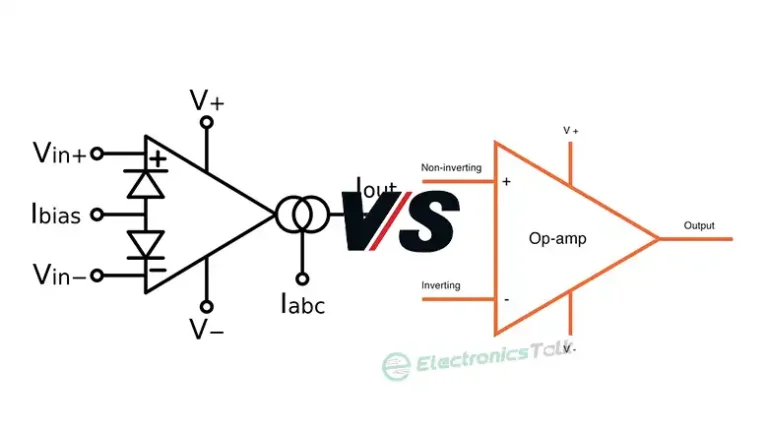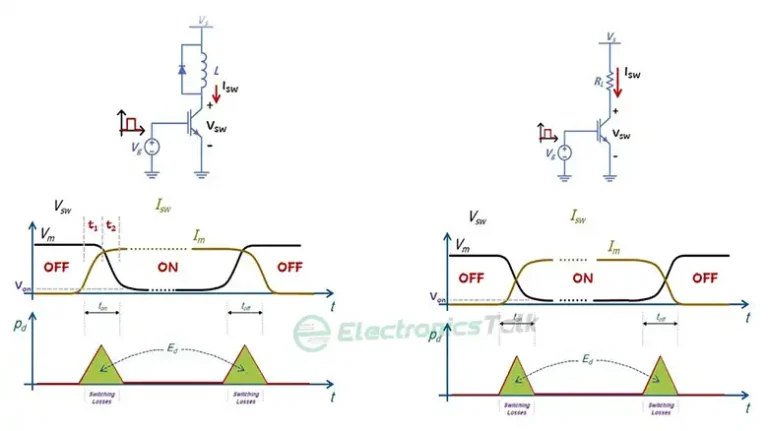What Happens if You Reverse Polarity on a Transistor? | What You Need to Know
Reversing the polarity of a transistor can have adverse effects. Reversing the polarity can result in abnormal functioning and even damage in bipolar junction transistors (BJTs), such as the NPN and PNP varieties.
An NPN transistor may enter reverse active mode as a result, changing the properties of current flow and voltage. Similarly, a PNP transistor’s polarity may be reversed to produce various current and voltage values.
Reversing the polarity by switching the source and drain connections can result in different voltage and current characteristics for field-effect transistors (FETs), such as N-channel and P-channel varieties, potentially leading to malfunction or failure. To maintain optimal transistor operation, it is essential to adhere to the right polarity connections.

Does Polarity Matter on a Transistor?
Yes, a transistor’s polarity does matter. When connecting a transistor to a circuit, the proper polarity must be kept in mind. For a transistor to work as intended, the transistor’s terminals, such as the emitter, base, and collector (in the case of a BJT) or the source, gate, and drain (in the case of a FET), must be linked with the correct polarity.
Reversing the polarity might cause the transistor to operate improperly, malfunction, or even sustain damage. Therefore, while employing transistors in electronic circuits, it is essential to pay attention to the proper polarity.
Will Reverse Polarity Damage a Transistor?
A transistor may sustain damage if the polarity is reversed, particularly if the reverse voltage is higher than the transistor’s maximum ratings. Depending on the type of transistor used and the strength of the applied reverse voltage, several types of damage may be inflicted.
The transistor may occasionally fully malfunction or behave erratically. To protect transistors and ensure their optimal performance, it is essential to maintain the correct polarity.
Impact on Reverse Polarity for Different Configurations
Reversing the polarity of a transistor in different circuit configurations can have significant effects on the transistor’s behavior and circuit operation. Let’s examine the consequences using equations for each configuration:
1. Common Emitter Configuration (BJT)
NPN Transistor
The transistor enters reverse active mode as soon as the polarity is reversed. The collector current (IC) in this mode can be approximated by the reverse active mode equation: IC ≈ -βIB, where β is the transistor’s reverse active mode current gain and IB is the base current. The voltage across the collector resistor (RC) can be expressed as VC = VCC – IC * RC.
These equations show how the forward active mode behavior deviates from the planned behavior, which could cause instability and damage.
PNP Transistor
In a PNP common emitter arrangement, reversing the polarity effectively causes forward active mode operation. However, the current and voltage levels will be different from what is planned, which could result in undesirable behavior or injury.
2. Common Base Configuration (BJT)
NPN Transistor
The connections are changed when the polarity is reversed, which impacts how the transistor behaves. The collector current (IC) can be expressed as IC ≈ αIE, where α is the current transfer ratio and IE is the emitter current. The voltage across the collector resistor (RC) can be given by VC = VCC – IC * RC.
The performance of the transistor may be impacted by polarity reversal due to the altered current and voltage characteristics that result.
PNP Transistor
Similar to the NPN common base arrangement, reversing the polarity can have an impact on the transistor’s performance by causing distinct current and voltage characteristics.
3. Common Collector Configuration (BJT)
NPN Transistor
In a common collector layout, reversing the polarity causes the base-emitter junction to be reverse-biased, which results in very little or no current flow. It is likely that the transistor wouldn’t function as anticipated.
PNP Transistor
Reversing the polarity might result in anomalous operation, which may disrupt the regulation of current and voltage and produce undesirable behavior or damage.
4. Common Source Configuration (FET)
N-Channel FET
The configuration is varied when the drain and source connections are switched, which results in different current flow and voltage characteristics. The drain current (ID) can be approximated by ID ≈ β(VGS – VTH)^2, where β is the transistor’s transconductance parameter, VGS is the gate-to-source voltage, and VTH is the threshold voltage.
The voltage across the drain resistor (RD) can be expressed as VD = VDD – ID * RD. When the polarity is reversed, it may cause erratic behavior, poor current control, and even circuit instability.
P-Channel FET
In a P-channel common source design, reversing polarity also affects the voltage and current flow characteristics. Unwanted behavior, weakened regulation, and probable circuit instability can result.
5. Common Gate Configuration (FET)
N-Channel FET
Reversing the polarity can interfere with the intended functioning by changing the properties of the current flow and voltage. The drain current (ID) can be approximated by ID ≈ β(VGS – VTH)^2, where β is the transistor’s transconductance parameter, VGS is the gate-to-source voltage, and VTH is the threshold voltage.
The performance of the transistor is compromised when the polarity is reversed, and this could result in undesirable behavior or instability.
P-Channel FET
Reversing the polarity can result in different current flow and voltage characteristics, which may have an impact on the transistor’s performance, similar to the N-channel common gate design.
6. Common Drain Configuration (FET)
N-Channel FET
In a common drain arrangement, switching the polarity alters the drain and source connections, which changes the current and voltage characteristics. The drain current (ID) can be approximated by ID ≈ β(VGS – VTH)^2, where β is the transistor’s transconductance parameter, VGS is the gate-to-source voltage, and VTH is the threshold voltage.
The voltage across the drain resistor (RD) can be expressed as VD = VDD – ID * RD. Inadvertent behavior, poor voltage control, and potential circuit instability can all come from reversing the polarity.
P-Channel FET
Similar to the N-channel common drain design, reversing the polarity might result in different current and voltage characteristics and possibly have an impact on the transistor’s performance.
Conclusion
Reversing the polarity on a transistor in various circuit configurations can cause instability, unreliable operation, and potential damage. Reliable circuit operation depends on adhering to the correct polarity connections stated in the transistor datasheet and circuit design.

![Can I Use 1n4004 Instead of 1n4001? [Advantages Explained]](https://www.electronicstalk.org/wp-content/uploads/2023/07/Can-I-Use-1n4004-Instead-of-1n4001-768x431.webp)


![[5 Tips] Can Soldering Damage Diode?](https://www.electronicstalk.org/wp-content/uploads/2023/08/Can-Soldering-Damage-Diode-768x431.webp)

